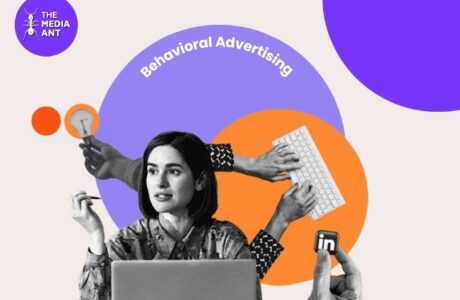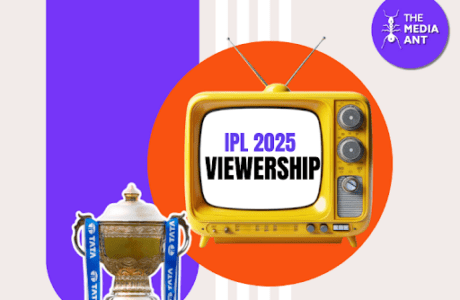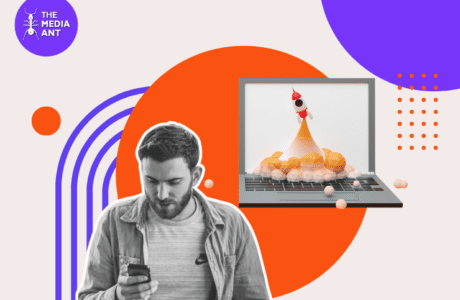The Hidden Power of Nostalgia: Why Old is the New Gold
Imagine stumbling upon an old jingle from your childhood or seeing a vintage ad for your favourite childhood snack. Instantly, you’re transported back to a simpler time—when life felt carefree, and happiness came in the form of a toy inside a cereal box. That, right there, is the magic of nostalgia marketing! Brands have long realized that tapping into fond memories isn’t just a feel-good moment; it’s a powerful marketing strategy that drives engagement, trust, and sales. But why does nostalgia work so well, and how are brands using it to their advantage? Let’s dive in!
What Is Nostalgia Marketing?
Nostalgia marketing is a strategy that taps into consumers’ fond memories of the past to create an emotional connection with a brand. By evoking sentiments of childhood, cultural touchstones, or iconic moments from previous decades, brands can establish deeper relationships with their audience. Whether through retro packaging, reboots of classic advertisements, or collaborations with beloved celebrities from past eras, nostalgia marketing leverages familiarity and sentimentality to boost engagement and sales.
Why Nostalgia Marketing Works Like Magic
Taps into Emotions
Emotional marketing is one of the strongest tools in advertising, and nostalgia is deeply tied to positive emotions. When people recall fond memories, their brains release dopamine, which creates a sense of comfort and happiness. Brands that evoke nostalgia help consumers associate those positive feelings with their products, leading to stronger brand loyalty and purchase intent.
Builds Instant Trust
Familiarity breeds trust. When consumers see a brand bringing back a beloved character, jingle, or aesthetic from their childhood, they feel a sense of reliability and authenticity. This is especially useful for older brands looking to re-establish connections with previous customers while appealing to younger generations who are drawn to vintage and retro aesthetics.
Drives Engagement & Sales
Nostalgia-driven campaigns often go viral because they encourage social sharing. People love revisiting their past and sharing those experiences with others. Brands that successfully integrate nostalgia into their campaigns create not only buzz but also higher conversion rates. Limited edition throwback products, revived ad campaigns and nostalgic collaborations often drive significant sales and customer interaction.
A Quick History: When Did Nostalgia Marketing Take Off in India?
1950s-1970s: Classic jingles, print ads, and mascots that shaped brand identities.
In India, the foundation of nostalgia marketing was laid in the mid-20th century. Brands like Amul introduced its famous mascot and catchy taglines, which are still fondly remembered today. Print ads with artistic designs and radio jingles became iconic, embedding brands into the collective memory of Indian households.
1980s-1990s: Pop culture-infused campaigns
The era of television brought nostalgia marketing to life in new ways. Brands like Maggi, Nirma, and Doordarshan TV shows became household staples, with their jingles and characters leaving a lasting impression. Soft drink brands like Gold Spot and Campa Cola also built cult followings, capitalizing on youth culture and Bollywood endorsements.
2000s-Today: Social media revives old trends, and brands remix the past for digital-first consumers.
With the rise of social media, brands have begun reintroducing old trends and remixing past campaigns to appeal to digital-first consumers. From the revival of classic shows on OTT platforms to brands reintroducing their vintage packaging, nostalgia marketing has seamlessly adapted to modern platforms, making the past more accessible than ever.
Iconic Nostalgia Marketing Campaigns That Worked
Nostalgia marketing has fueled some of history’s most successful and heartwarming campaigns. These campaigns take consumers on a trip down memory lane, reigniting cherished emotions and building deeper brand connections. From iconic food brands to pop culture sensations, let’s explore some of the best nostalgia-driven marketing successes that made audiences say, “Wow, this brings back memories!”
Coca-Cola’s “Share a Coke” Campaign
Coca-Cola has long been a master of nostalgia marketing, and the “Share a Coke” campaign was no exception. By replacing its iconic logo with popular names and phrases, the campaign tapped into personal memories, encouraging customers to find and share bottles featuring names of their friends and loved ones. This campaign didn’t just evoke warm feelings—it created an interactive and viral social experience that drove massive engagement and sales.
Pokémon GO – The Ultimate ’90s Kid Comeback
Remember the thrill of collecting Pokémon cards or battling with friends on your Game Boy? Pokémon GO brought that magic back by blending nostalgia with cutting-edge augmented reality (AR) technology. By letting players catch their favorite childhood Pokémon in real-world locations, the game became a cultural phenomenon. Millennials and Gen Z players alike embraced it, proving that nostalgia, when paired with innovation, is a recipe for success.
Idea: Honey Bunny
Vodafone’s “Honey Bunny” campaign leveraged the power of a catchy jingle to create an earworm that stuck with audiences. The playful, repetitive tune was reminiscent of classic advertising jingles from the ’90s and early 2000s, bringing back a sense of familiarity and fun. By using a simple yet addictive melody, Vodafone ensured that people of all ages would hum along, strengthening brand recall effortlessly.
McDonald’s “Adult Happy Meals” & Throwback Toys
Who says Happy Meals are just for kids? McDonald’s tapped into childhood nostalgia by launching limited-edition “Adult Happy Meals” complete with classic throwback toys. This campaign was a massive hit among millennials who grew up loving McDonald’s toys and wanted to relive their childhood excitement. By blending fun, exclusivity, and a sense of playfulness, McDonald’s turned nostalgia into a sales-driving force.
Netflix’s Stranger Things – A Love Letter to the ’80s
Netflix’s Stranger Things is one of the best examples of nostalgia marketing done right. From its synth-heavy soundtrack to the retro costumes, arcade games, and classic movie references, the show is a full-fledged tribute to 1980s pop culture. This strategy didn’t just attract older audiences who lived through the ’80s—it also introduced younger viewers to the era’s aesthetics, proving that nostalgia can bridge generations.
Nike’s Classic Sneaker Revivals
Nike has mastered the art of sneaker nostalgia by continuously re-releasing classic shoe designs from past decades. Whether it’s Air Jordans from the ’90s or the revival of vintage running shoes, Nike taps into consumers’ sentimental attachment to past fashion trends. By using nostalgia as a branding tool, Nike has created an evergreen demand for its heritage products, making old-school styles forever cool.
How Your Brand Can Use Nostalgia Marketing
1. Revive Old Branding
Reintroduce classic logos, packaging, or mascots that once resonated with consumers. Limited-edition retro packaging can spark excitement and encourage customers to share their nostalgia online, creating organic brand awareness.
2. Leverage Iconic Music & Pop Culture
Music is a powerful nostalgia trigger. Brands can use classic jingles or collaborate with celebrities from past decades to create an emotional connection. Pop culture references—such as TV shows, cartoons, or old-school catchphrases—also enhance engagement.
3. Reintroduce Classic Products
Bringing back discontinued or “fan-favorite” products can generate buzz and rekindle consumer interest. Many brands have successfully revived products that were once popular, creating exclusivity and urgency around limited-time releases.
4. Use Social Media Throwbacks
Hashtags like #ThrowbackThursday (#TBT) and #FlashbackFriday (#FBF) are perfect for engaging audiences with nostalgic content. Brands can share old advertisements, behind-the-scenes footage, or consumer-generated content from past decades to create sentimental appeal.
5. Create Limited-Edition Collectibles
Nostalgic collectibles, such as reimagined merchandise, figurines, or packaging, can drive sales and enhance brand loyalty. Partnering with artists or influencers to design throwback merchandise can further amplify impact.
What’s Next for Nostalgia Marketing?
AI & Nostalgia
Artificial Intelligence is revolutionizing nostalgia marketing by restoring and colorizing vintage content, allowing brands to breathe new life into old memories. AI-powered tools can enhance and remaster old commercials, music, and visuals, making them more engaging for modern audiences. Additionally, AI-driven personalization enables brands to tailor nostalgic experiences based on user data, creating hyper-personalized campaigns that feel uniquely sentimental to each customer.
Deepfake Tech
Deepfake technology is unlocking unprecedented opportunities in nostalgia marketing. Brands can now recreate legendary advertisements featuring past celebrities, bringing back icons in a way that feels seamless and immersive. This technology also enables brands to reimagine classic commercials with modern twists, ensuring that nostalgic campaigns remain fresh and relevant. However, ethical considerations must be carefully managed to maintain authenticity and consumer trust.
Metaverse & VR
The rise of the Metaverse and Virtual Reality (VR) is set to take nostalgia marketing to new heights. Brands can create fully immersive experiences where consumers can virtually step into past eras—whether it’s reliving the golden age of 90s gaming, experiencing classic retail stores, or even attending recreated concerts of legendary artists. The ability to blend nostalgia with cutting-edge technology offers brands a compelling way to engage audiences across generations, merging the best of the past with the limitless possibilities of the future.
Final Takeaway: Nostalgia Marketing = Emotional Goldmine
Nostalgia marketing isn’t just a fleeting trend—it’s a powerhouse of emotional connection and consumer loyalty. Think about it: when a brand reminds you of your childhood, your first favorite TV show, or a discontinued snack that made school lunch breaks exciting, you instantly feel a rush of warmth and familiarity. This emotional pull isn’t just good for engagement; it leads to stronger brand trust, repeat customers, and viral marketing success.
By blending the charm of the past with modern marketing tools, brands can craft campaigns that feel both personal and timeless. The key lies in striking the right balance—leveraging nostalgia without feeling outdated. Whether it’s through AI-powered revivals of old ads, deepfake tech recreating iconic celebrity endorsements, or Metaverse experiences that transport users back in time, nostalgia marketing will continue evolving, making the past more accessible than ever.
So, if you’re a brand looking to create memorable campaigns that resonate across generations, don’t just look ahead—take a look back. Because the past isn’t just history; it’s an untapped goldmine waiting to be rediscovered!
FAQs on Nostalgia Marketing
What is a nostalgia marketing strategy?
A nostalgia marketing strategy involves using past themes, pop culture, and memories to create an emotional bond with customers. This includes reviving old ads, using retro packaging, or bringing back classic products.
What is an example of nostalgia marketing in India?
One example is Maggi’s constant references to its legacy through advertisements that remind customers of its place in their childhood memories. Similarly, brands like Paper Boat use nostalgic storytelling to evoke emotions linked to Indian childhood traditions.
What is nostalgia marketing for Gen Z?
For Gen Z, nostalgia marketing often involves bringing back early 2000s trends, Y2K aesthetics, and video game reboots. Since Gen Z grew up in the digital age, social media revivals of old trends play a key role in their nostalgia-driven experiences.
What is nostalgia theory in marketing?
Nostalgia theory in marketing suggests that people have a psychological tendency to seek comfort in familiar past experiences. This is why brands that evoke nostalgia often create strong emotional connections and customer loyalty.





